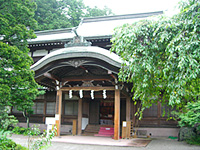
Toshogu Shrine
Japan is undergoing renovations of major historical buildings all over the country, but in the eyes of many visitors, it’s most apparent and frustrating in the city of Nikko, two hours north of Tokyo. Shrines and Temples of Nikko is a UNESCO World Heritage site consisting of two Shinto shrines and one Buddhist temple (Futarasan Shrine, Toshogu Shrine, Rinnoji Temple) and their surroundings, including 103 buildings, of which nine are classified as National Treasures, and 94 as Important Cultural Properties. Several of the most compelling structures in Nikko are undergoing various forms of renovation, which often involves enclosing an entire historical structure in a steel barn or other opaque coverings.
In addition to the renovation frustrations, the popular 3-in-1 tourist ticket has been discontinued, meaning the three sites will now cost between 300 and 900 yen each, versus 1,000 yen for all three. A recent WoWasis trip to Japan revealed that Nikko seems to be at the top of many visitors’ complaint lists. While Japan deserves appreciation for keeping its most prized visitor sites in good repair, it does cause frustration for tourists, and Nikko’s most significant repairs won’t be finished for several years.
 Renovation at the Yomeimon Gate at Toshugu Shrine, an iconic structure, began this past June, while at the main hall at Rinnoji Temple, pest work has just begun. This will lead to an expanded, overall repair initiative, now that entry restrictions are in place. In addition, Futarasan Shrine will begin renovating its main hall in Spring, 2014. The work on all three sites is estimated to be finished in six years.
Renovation at the Yomeimon Gate at Toshugu Shrine, an iconic structure, began this past June, while at the main hall at Rinnoji Temple, pest work has just begun. This will lead to an expanded, overall repair initiative, now that entry restrictions are in place. In addition, Futarasan Shrine will begin renovating its main hall in Spring, 2014. The work on all three sites is estimated to be finished in six years.
These repairs have brought a temporary end to the 3-for-1 ticket to these three sites, a ticket that has been in existence since the Meiji (1968-1912) era. As was recently reported in the Yomiuri Shimbun, the two shrines recommended suspending the common ticket due to the fact that so many of the buildings on their sites are under renovation. The management of the shrines and the temple had reached a tentative agreement to collect their own separate ticket fees, with the Toshugo Shrine agreeing to help subsidize repairs in the other two sites. Management of Rinnoji Temple, however, has balked, as it was depending on revenue from the common ticket to pay for the lion’s share of its renovations. As the argument goes, if visitors have their choice as to which sites are now most worth seeing, they may very well ignore Rinnoji.
Thus, there is a two-pronged problem in Nikko. An increasing number of structures in these sites are being functionally lost to visitors for varying periods of time, and the attractive joint ticket has been abolished. It remains to be seen how ultimately this will affect funding for renovating these three important sites at Nikko, but tourist grumbling has already begun.
Leave a Reply